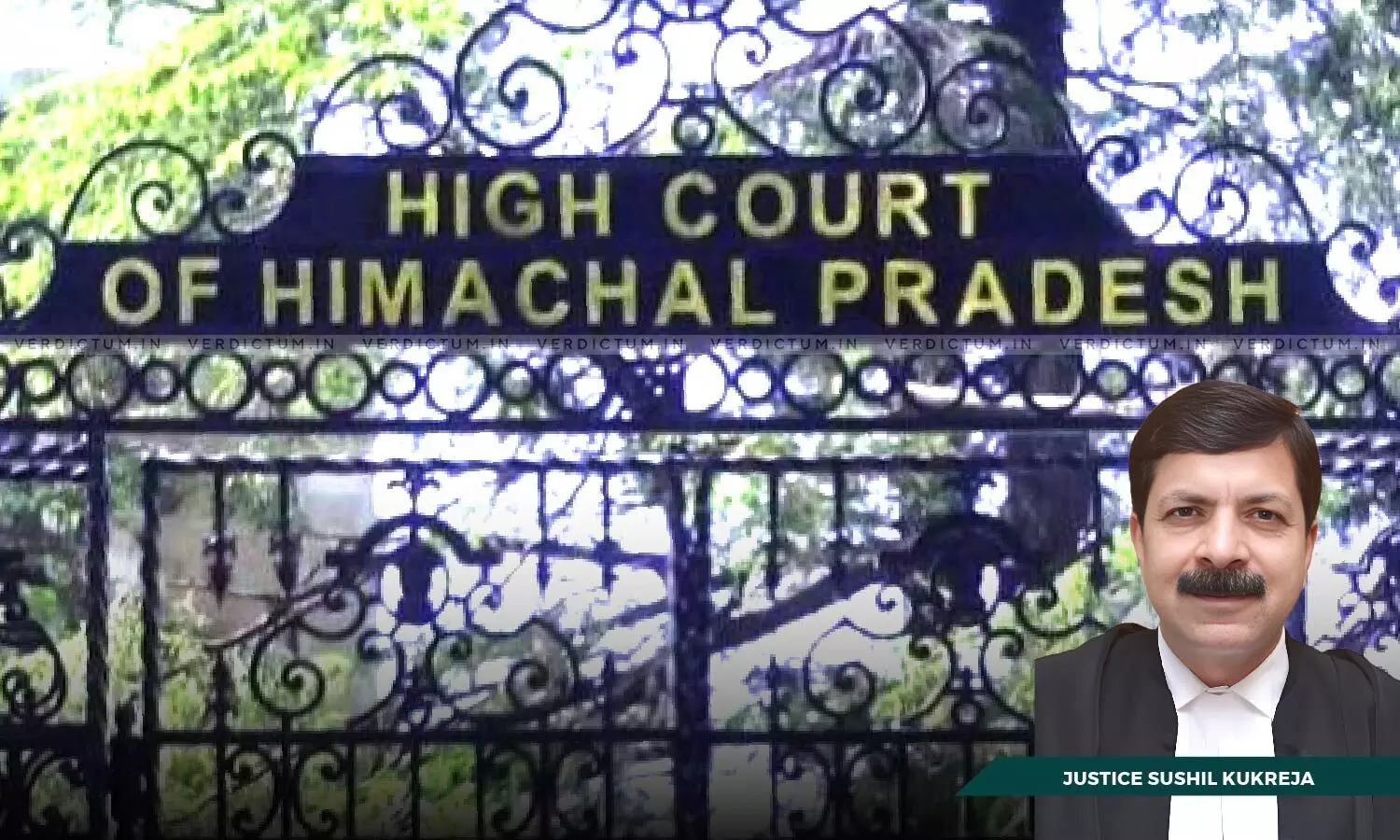
Justice Sushil Kukreja, Himachal Pradesh High Court
Test Identification Parade Is Necessary If Accused Persons Are Strangers To Witnesses: Himachal Pradesh High Court
 |
|The Himachal Pradesh High Court reiterated that if an accused is not named in the FIR, his identification by the witnesses in the Court should not be relied upon specifically when they did not disclose name of the accused before the police.
The Himachal Pradesh High Court has emphasized that the Test Identification Parade (TIP) is necessary when the accused persons are strangers to the witnesses, in order to ascertain the identity of the accused.
The Court emphasized thus in a batch of Criminal Appeals filed by the accused persons, challenging the Judgment of conviction and Order of sentence passed by the Additional Sessions Judge, by which they were convicted under Sections 147, 333, 332, 353, and 506(II) read with Section 149 of the Indian Penal Code, 1860 (IPC).
A Single Bench of Justice Sushil Kukreja observed, “A bare perusal of the statement of these witnesses i.e. PW-1 to PW-3 so examined by the prosecution is clearly indicative of the fact that some of the accused persons were stranger to the said witnesses and in these circumstances test identification parade was necessary in order to ascertain the identity of the accused persons. Failure to establish the identity of the accused goes to the root of the matter as such the possibility of mistaken identity cannot be ruled out.”
The Bench reiterated that if an accused is not named in the FIR, his identification by the witnesses in the Court should not be relied upon specifically when they did not disclose name of the accused before the police but to this general rule, there may be exceptions.
Senior Advocate N.S. Chandel appeared for the Appellants/Accused while Additional Advocate General (AAG) Pawan Kumar Nadda appeared for the Respondent/State.
Brief Facts
In 2008, the Complainant i.e., the then Rent Controller, Wakf Board, H.P. telephonically informed the police that Liyakat Ali along with others, was quarrelling with them in Kutub Masjid. Consequently, a police team rushed to the spot where Kutub Deen made a statement under Section 154 of the Criminal Procedure Code, 1973 (CrPC) wherein he stated that he was a resident of a village and employed in Wakf Board. He further stated that from April 2001 onwards he was serving as Rent Controller of Wakf Board and Shimla circle was within his jurisdiction. Pursuantly, employees of the Wakf Board went to Kutub Masjid in Sabzi Mandi for closing the stairs leading from upper hall to the main hall of the Masjid.
When ply board was being fixed by one of the accused persons, the then President of Hawkers’ Union, along with other accused persons allegedly entered the Masjid after making prior concert and they started thrashing Complainant and others. One person suffered injuries on his neck, shoulder, and back of the head. It was further alleged that the accused persons proclaimed that they would not leave the Masjid at any cost and also threatened to do away with their lives. Based on the Complainant’s statement under Section 154 CrPC, the police registered a case and the accused persons were arrested. The Trial Court convicted all of them and sentenced them to undergo rigorous imprisonment along with a fine of Rs. 5,000/- each. Being aggrieved by this, they approached the High Court.
Reasoning
The High Court in view of the facts and circumstances of the case, noted, “The evidence led by the prosecution does not inspire confidence as the prosecution witnesses had contradicted the statements of each other on material particulars and these contradictions cannot be brushed aside by terming them as discrepancies and forgetfulness due to lapse of time. There are major discrepancies and contradictions in the statements of the witnesses of the prosecution. Thus, the statements of the prosecution witnesses qua the genesis of the incident cannot be relied upon, as the witnesses examined by the prosecution are highly interested witnesses.”
The Court said that all the prosecution witnesses were interested in the success of the prosecution case, thus they were interested witnesses and hence, the evidence of the prosecution becomes suspicious, therefore, no reliance can be placed on their statements so as to make out a case for convicting the accused persons.
“Admittedly, the place of occurrence was a busy area, but surprisingly no independent witness was associated by the police to prove the case of the prosecution. PW-1 deposed that mosque was situated in a thickly populated area of Shimla town and there were shops and residences near the mosque. However, the police did not make any effort to associate independent witnesses, despite their availability on the spot who could have been the best persons to support the prosecution case”, it further noted.
The Court also remarked that there are material contradictions, embellishments, discrepancies, and improvements in the statements of the material prosecution witnesses, which demonstrate that the occurrence had not taken place in the manner, as has been depicted by the prosecution.
“In view of the facts and circumstances of the case and the evidence available on record, this court finds that witnesses produced by prosecution do not inspire confidence. There are lapses on the part of investigation”, it added.
The Court, therefore, concluded that the prosecution has failed to prove its case against the accused persons beyond reasonable doubt.
Accordingly, the High Court allowed the Appeals and acquitted the accused persons.
Cause Title- Liyakat Ali v. State of Himachal Pradesh (Neutral Citation: 2025:HHC:19149)
Appearance:
Appellants: Senior Advocate N.S. Chandel and Advocate Shwetima Dogra.
Respondent: AAG Pawan Kumar Nadda